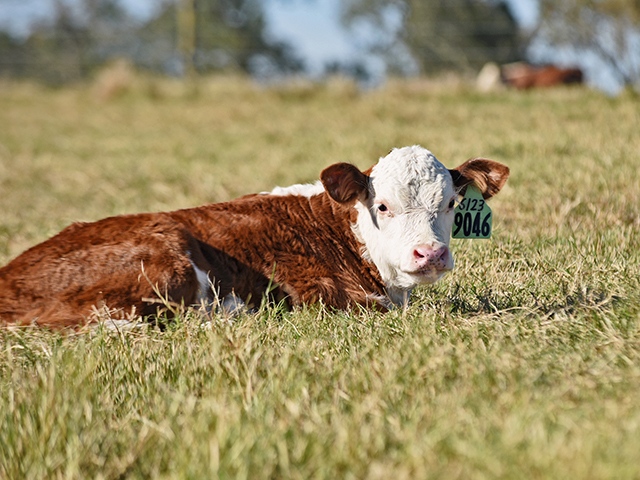Ask the Vet
Curve Benders Becoming More Common
READER: I have been noticing my fall calves seem to have been getting earlier over the years? This year, several calves were two to three weeks early. These are AI (artificially inseminated) and ET (embryo-transfer) calves, as well as natural bred cows, all coming before their due date based on bull turnout times. The calves are small but vigorous. One was 45 pounds, but the rest have been in the upper 50- and 60-pound ranges. Do you have any thoughts on what may be going on?
Dr. McMillan: You are not the only one who has noticed this. There are a lot of opinions as to why this is happening, and more research needs to be done. The most common theory I hear, and the one I believe, is that we have, as an industry, put a lot of emphasis on low-birthweight, calving-ease bulls in the last few years.
There is talk about "curve benders" with low birthweights and high weaning and yearling weights. How do you get low birthweight and high growth numbers? The easiest way is shorter gestation periods. When you stack generation after generation of calving-ease genetics, I believe we see calves coming days to weeks earlier than the traditional 283-day gestation period.
This seems to be more common with fall-born calves than spring-born calves. One theory has to do with winter nutrition in the second trimester, but more research needs to be done on both these issues.
P[L1] D[0x0] M[300x250] OOP[F] ADUNIT[] T[]
While low birthweight and calving ease are extremely important in heifers, I feel we can get birthweights too low in mature cows and, as a result, may lose production. The answer comes back to looking for bulls' optimal expected progeny differences (EPDs), and these can be different for heifers and mature cows.
I would like to hear reader perspectives on these issues. I believe this is an extremely important issue.
READER: In a past issue of the Progressive Farmer, you wrote in your column about vaccinating cattle at birth versus later in life. From what I understand, the blackleg vaccination should be given around 4 months of age. If I administer this at birth versus 4 months old, will I have a better outcome, or is there no difference?
Dr. McMillan: Let me expand on this a little. Most calves from properly vaccinated dams have good maternal immunity to clostridial diseases, with blackleg being the most significant for animals at 3 to 4 months of age.
In an ideal world, with controlled calving seasons, calves should be vaccinated around that 4-month time period with a clostridial vaccine, as well as for infectious bovine rhinotracheitis (IBR), bovine viral diarrhea (BVD), parainfluenza virus (PI3) and bovine respiratory syncytial virus (BRSV). They also should be given boosters prior to weaning. If you cannot prior to weaning, and you have your hands on that newborn calf, there is nothing wrong with a properly administered clostridial vaccine. At worst, the calf won't respond, but some may.
READER: We have had three sets of twins born this year, and all the cows had retained placentas. We had to pull one set of twins, with one dead. On another set, the cow wouldn't take one of the twins, so it is on a bottle. The third set was a bull and a heifer. Are cows that have twins more likely to have retained placentas? Is one of our herd bulls the reason for this increase in twinning? If so, how do we identify him so we can take him out of the herd?
Dr. McMillan: Any abnormal event around birth can increase the incidence of retained placenta. And, there is good research to show that twinning increases retained placentas. There is also good research showing that shorter gestation periods increase retained placentas, and a twin's gestation length is about a week less on average than that of a single calf. Dystocia, however, has a greater effect than gestation length. What I'm saying is that there are multiple factors at play.
Regarding your herd bulls, they have no effect on twinning. Most twins occur when the cow ovulates two eggs that are then fertilized, producing fraternal twins. When one egg is fertilized and splits, we see identical twins. Multiple ovulation is a slightly heritable trait, so the genetics for twinning is most likely in your cow herd.
> Please contact your veterinarian for questions pertaining to the health of your herd. Every operation is unique, and the information in this column does not pertain to all situations. This is not intended as medical advice but is purely for informational purposes.
> Write Dr. Ken McMillan at Ask The Vet, 2204 Lakeshore Dr., Suite 415, Birmingham, AL 35209, or email vet@progressivefarmer.com.
[PF_0121]
(c) Copyright 2021 DTN, LLC. All rights reserved.




